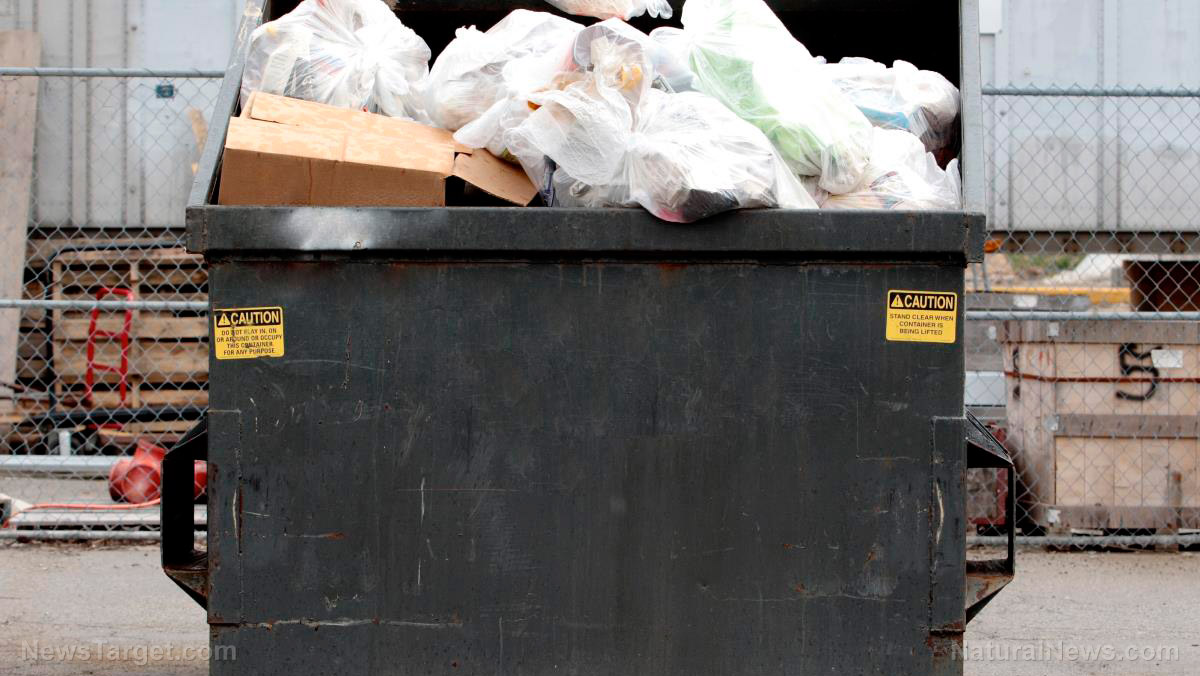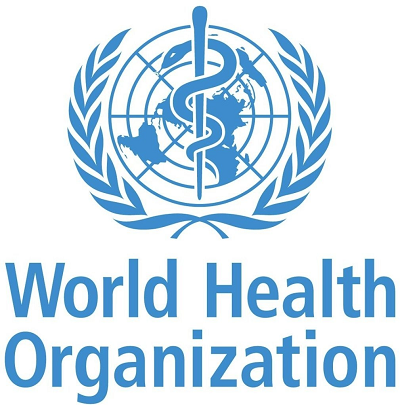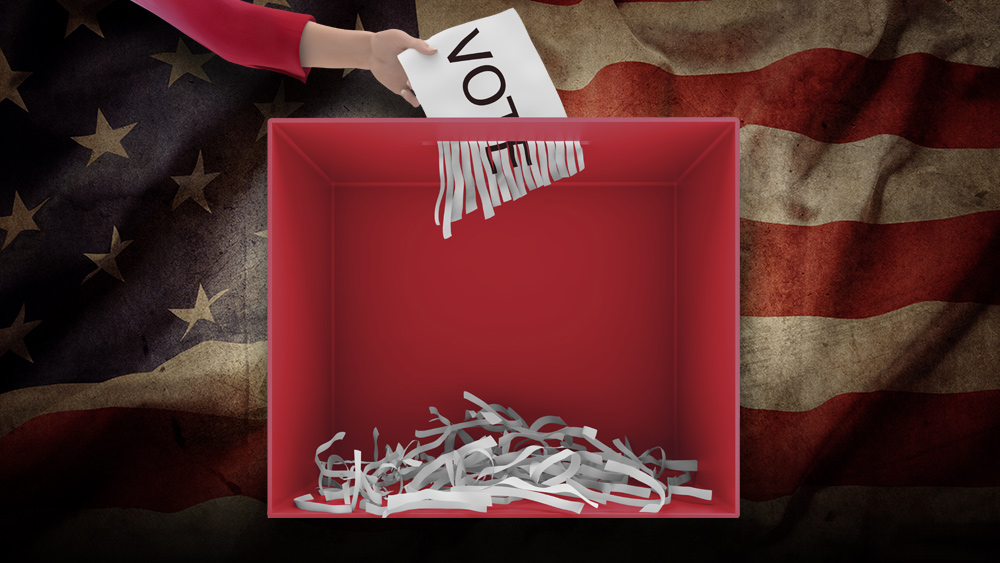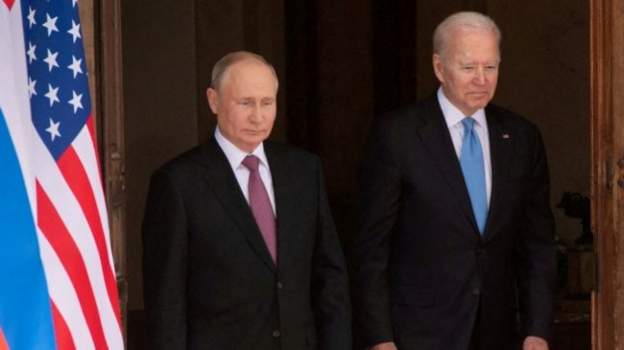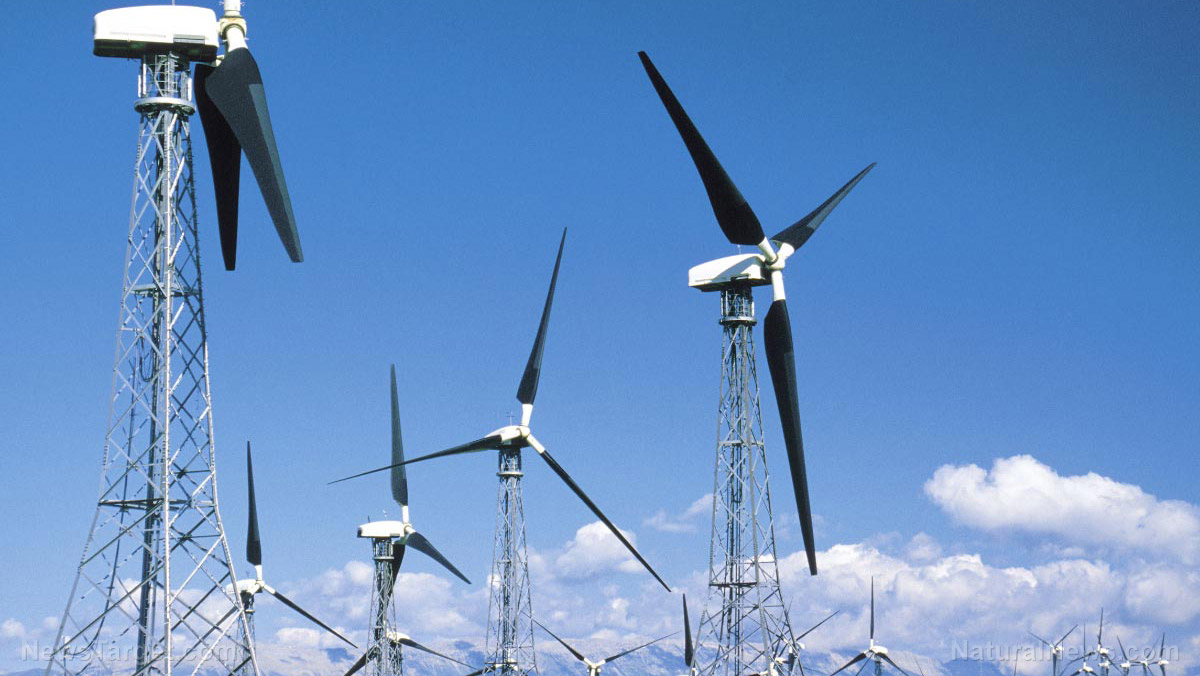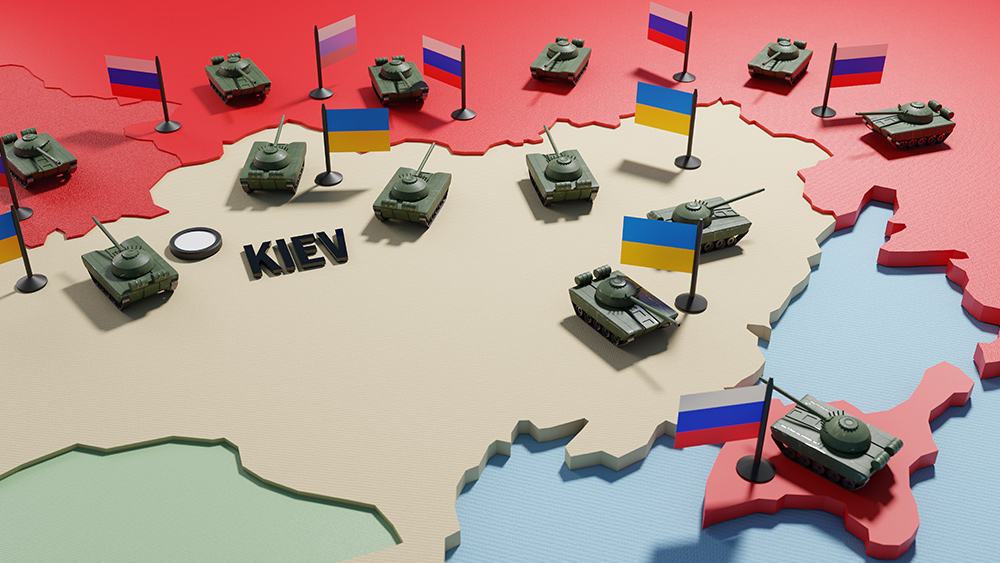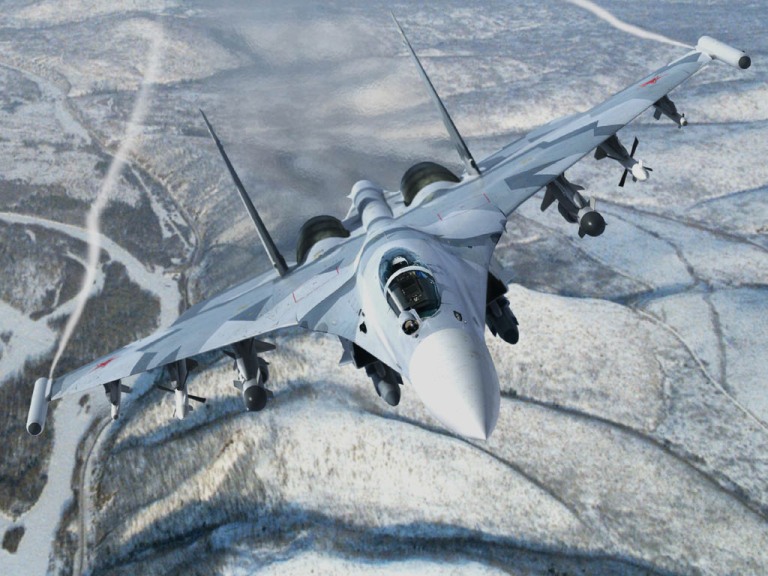Let’s talk about nuclear war
02/08/2023 / By News Editors
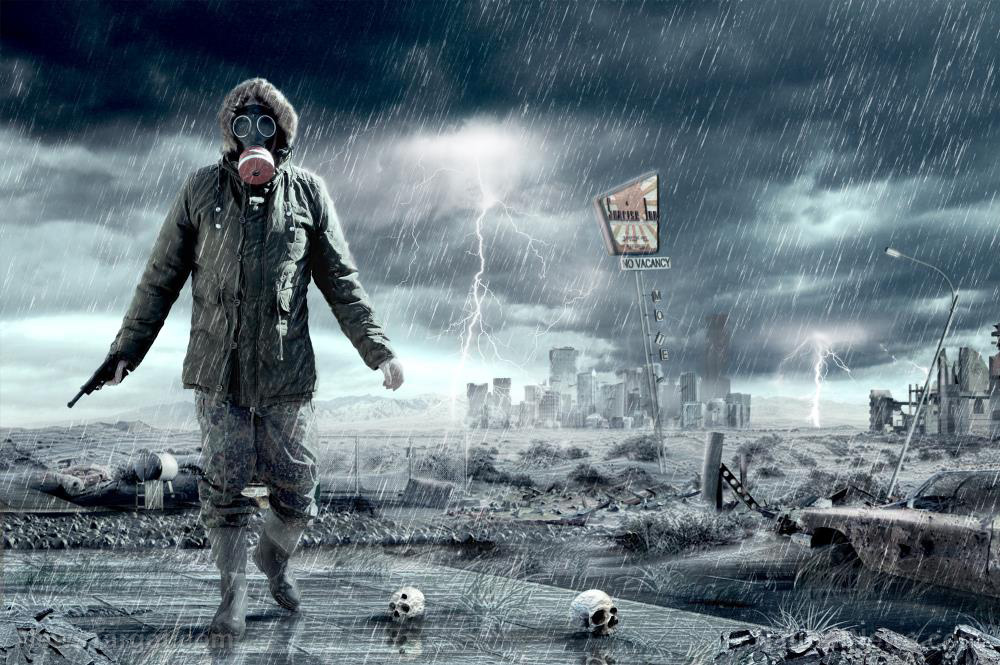
The United States and Russia – the two greatest nuclear powers on the planet – have embarked on a wide-ranging “indirect war”. All that now remains is for them to engage in direct warfare, which will end up happening sooner or later. If later, it will be exactly because both powers are aware that any direct war between them will inevitably escalate into nuclear war, with a good chance of devastating them both.
(Article by Ruben Bauer Naveira republished from TheSaker.is)
How we reached this point will not be examined in depth here. Very briefly, both parties regard this as a struggle for existence – Russia, in order to continue to exist as a nation (in Putin’s words, “there is no compromise, a country is either sovereign or a colony”), and the United States, to continue to exist as the nation with hegemony over the rest (the US economy has become so reliant on that hegemony that its end would entail the country’s collapse).
Accordingly, both are willing to take the conflict to its ultimate consequences in order to prevail, and thus nuclear war becomes more inevitable with every passing day.
Among those responsible for a nuclear war that will be the downfall of all Humankind, there can be no “good guy”. However, when one side is fighting to subsist with autonomy, while the other is fighting in order to dominate the rest, it is not difficult to discern which is most the “bad guy”. Also, if it is still possible, after the hecatomb, to bring the culprits to some kind of justice, it will make all the difference to distinguish who “pressed the button” first (that is, who deliberately chose for millions of people to die) from whoever operated their buttons in retaliation to the incoming attack.
What developments will take place until we finally arrive at nuclear war is also not the purpose of this piece. Once again, to summarise, both are trying to “gain time”, hoping for their adversary to fall over their own feet before direct war ensues: the Russians are counting on an economic and social collapse in the West, while the US counts on a military defeat of the Russians by the Ukrainians, resulting in the fall of the Putin government. It has to be said, however, that thus far the Russians are getting the better of this “war of attrition”.
The US also seeks to draw Russia into war against some other, NATO-member country, prodding Lithuania to blockade land access to the Russian enclave of Kaliningrad, Romania to provide Moldavia with the means to reincorporate the pro-Russian separatist region of Transnistria, and Poland to occupy the westernmost portion of the Ukraine, so as to force Russia to respond militarily. Under the fifth article of the treaty that set up NATO, an attack on any member state is to be taken as an attack on them all; in that way, the United States would drag all of Europe into a war against Russia. The Russians (as well as these European cannon-fodder candidates) have thus far managed to sidestep this trap.
What is certain is that, militarily, both the United States and Russia are preparing for the eventuality of a nuclear war. The Russians have been doing so for longer. So much so that they have resumed the Soviet-era endeavour to build nuclear shelters on a major scale for their whole urban population: by 2016, new shelters were ready to house a further 12 million people. Conversely, the United States relies on the “first strike” doctrine of a devastating, surprise attack to decapitate the Russian leadership before they have time to react. For that reason, the possibility of their installing nuclear missiles on Ukrainian territory was, given its geographical proximity, a “red line” for the Russians and a fond aspiration for the United States (missile flight time to Moscow would be cut to about four minutes).
In order to be in a position to unleash a first strike, the United States have taken the following measures: they have introduced what they call “super-fuze” technology to their warheads. This causes detonation to occur on arrival at an optimal altitude over the target, with deviation (trajectory imprecision) factored in, thus enabling less powerful warheads to guarantee destruction of strongly protected target (such as Russia’s missile launch silos). They have also converted some of their Ohio class, ballistic missile launching submarines (each carried 24 Trident missiles) to cruise missiles (each now carries 154 Tomahawk missiles, which are harder to detect and home in on their targets more accurately). Lastly, they are “miniaturising” the warheads (which can now be less powerful than the bomb dropped on Hiroshima), on the (theoretical) basis that missiles that are more accurate, harder to detect and that detonate closer to their targets can be relied on to annihilate Russia’s retaliatory capability – even using less powerful warheads and thus minimising the resulting “nuclear winter” effects. The Russians, meanwhile, as deterrents to a US nuclear attack, have developed innovative weapons whose performance is a closely-guarded secret of State (the US will have to find out the hard way). These include the S-400, S-500, S-550 and A-235 Nudol anti-missile systems and the Peresvet space satellite “blinding” weapons.
Paradoxically, these strategies both feed back into each other, driving a kind of self-fulfilling prophecy. To date, the more the United States has relied on a first-strike capability, the more Russia has striven to prepare itself to deter one. From now on, the more the Russians develop the ability to seal off their airspace to enemy missiles, the smaller will be the chances of an effective first strike by the United States – “effective” in the sense of liquidating, in full or at least in large part, Russia’s ability to retaliate; even if only a few missiles do penetrate Russia’s defences, millions will die, making retaliation a certainty (see this article). Accordingly, the window of opportunity for a successful first strike by the US is gradually closing. Given the prospect of Russia’s becoming militarily hegemonic in the future, the United States finds itself racing against time and, with an ever-mounting sense of urgency, feeling compelled to take action before Russia’s shield is complete.
Unhappily for Humankind, there does now exist the absurd prospect of a nuclear war actually happening and, accordingly, this article seeks an answer – any answer – to the fateful question, which should never ever have to be put into words: “If nuclear war does ultimately break out, how will it leave the world afterwards? How will it be possible for us to live our lives?”.
Any answer to those questions requires first considering at least three boundary conditions:
The first is technical: are there any objective grounds for such an answer? No, there are not. No-one in their right mind can foresee what the world will be like after a nuclear war – nor even know for sure whether there will be any life left on the planet. This will depend on the magnitude of the “nuclear winter” phenomenon, which is the abrupt drop in temperatures caused by dust rising from nuclear explosions, then remaining suspended in the atmosphere and blocking out the Sun’s rays. It has to be admitted, from the outset, that any answer to our question will be no more than pure speculation coloured by varying doses of wishful thinking.
“Nuclear winter” is the phenomenon in which the Earth’s surface cools abruptly as millions of tons of carbon particles are borne skyward in smoke from the explosions and resulting fires and suspended in the upper atmosphere. In a matter of weeks, as that layer of soot covers the globe and blocks out sunlight, temperatures will fall and rain volumes decline as evaporation diminishes. This will cause animal and plant life to die out all around the world.
Scientists have been unable to establish a threshold for the exact number of nuclear explosions it would take to extinguish life on the planet. So, speculating, if the total detonations number in the tens, the effects are unforeseeable, because there is no way of knowing to what extent the environment will be able to compensate. If they total hundreds, it is to be supposed that both sunlight and rainfall will be reduced by about a half – which will subject the surviving portion of Humankind to unimaginable suffering. If they come in their thousands, life on Earth will almost certainly become extinct (see this explanatory video).
In that light, the prospects are gloomy: the United States and Russia each hold around 1,600 nuclear bombs ready for use, plus more than three time that number currently inactivated. Worse still, Earth’s environmental balance is already considerably shaky, undermining our planet’s ability to offset the effects of a nuclear winter.
The second boundary condition is ethical: if there is one thing that can be said with any certainty about a post-nuclear-war world, it is that it will involve unspeakable human pain and suffering (see this article). The subject cannot be addressed without taking this into careful and sensitive consideration.
The third boundary condition – the most important of the three – is practical: who would be interested in an answer (any answer) to the question: “If nuclear war does ultimately break out, how will it leave the world afterwards? How will it be possible for us to live our lives?”? It would probably not interest the vast majority – and there, we come up against the previous boundary condition, of the obligation to seek to respect others’ sensitivities.
By and large, here we consider three groups:
A first group of people, in the eventuality of a post-nuclear-war era, may simply not want to go on living. Who can judge them? Who can measure the pain of suddenly and unexpectedly losing all frames of reference built up over an entire lifetime? The only prospect of any interest to these people is one where nuclear war never ever occurs.
A second group of people will want to live, but from survival instinct only. These people will act in highly individualistic manners. Once again: who can blame them for wanting to survive? For them to manage to shed their excessive individualism, they will have to be “won over” by some new “civilising process” (an allusion to the civilising process of the past three hundred years, which produced the Modern Age and has been described by thinkers from Descartes to Max Weber, by way of Kant, Voltaire, Hegel, Marx and many others. It is the process by which the mystical, superstitious Middle Ages gave way to a world of modern “subjects”, masters of their own rationality). The people of this group will not even want to hear mention of nuclear war, until such time as it happens.
Lastly, there is a third group of people who see meaning in Humanity’s course through History – the “human adventure on Earth”. It is this group alone (certainly a minority, at least at first) that will be interested in answering the question “How will it be possible for us to live our lives?”.
Given all these reservations, one (obviously not the only) answer to that question can be summarised in a single word: reconnect.
– Reconnect with Nature: here, it means literally reconnecting with “Mother Earth”, that is, with the earth, the soil that ultimately provides our subsistence. If a nuclear war does break out, the worst situation to be in will be crammed together with thousands or millions of other people, all spiralling out of control at the same time. City life is proper to the Modern Age (capitalism, industrial revolution, Nation-State, secularisation, the primacy of the individual, urban life), while a nuclear war will cause us to revert to pre-modern conditions. So, try to sketch out an “escape” route to somewhere, preferably sparsely populated, away from the city (clearly, if your country is directly involved in a nuclear war, that escape route will have to take you abroad);
– Reconnect with your own: it is easier to cope with the hardships of life in critical condition if you have solid emotional ties with those who are dearest to you. If, for whatever of life’s reasons, you have drifted out of touch with those you love, open up to them honestly and wholeheartedly and try to set things straight between you. The less you are alone, the better: reconcile yourself with them, because the time is now (among other things, because, if you or they pass away, you will not carry the burden of having torn yourself from them in life).
– Reconnect with yourself: for each one of us, the meaning of life comes from what we do with the life we have – which obscures the fact that, ultimately and for everyone, the meaning of life is given simply by being alive. If a nuclear war does ensue, things like accumulation, ostentation, consumption or pleasure-seeking will suddenly become impracticable. Be open to the fact that you, due to your continuing alive, will be in a position to find new meanings for your life – for what you will come to do with the life that will continue to be yours. These new meanings may be more collective than individual (with the collective directed to the wellbeing of each constituent individual) – and why not? Of course, that kind of thing has yet to be developed, so then why should the meaning of each person’s life not be to contribute to building up the common good? Openness is the first and most important step.
World peace (and averting a nuclear war) are certainly beyond your means, but you can make peace with Nature, with others and with yourself.
Finally, I would like to apologise to readers for the discomfort that may have been caused by my broaching such an anguished subject.
(Translated into English by Peter Lenny MCIL)
Read more at: TheSaker.is
Submit a correction >>
Tagged Under:
big government, chaos, Collapse, conspiracy, military tech, national defense, national security, nuclear, nuclear survival, nuclear war, nuclear weapons, nuclear winter, panic, Russia, SHTF, US, weapons technology, World War III
This article may contain statements that reflect the opinion of the author
RECENT NEWS & ARTICLES
COPYRIGHT © 2017 BIG GOVERNMENT NEWS



